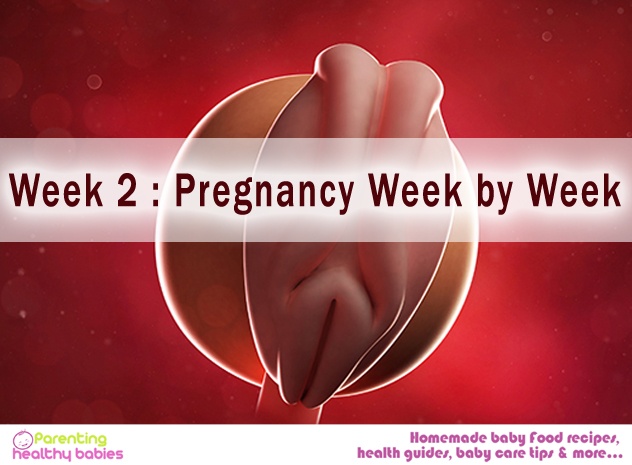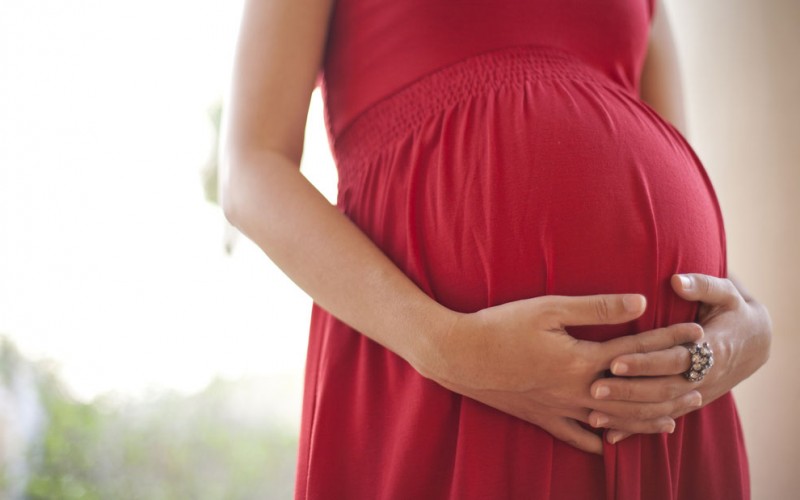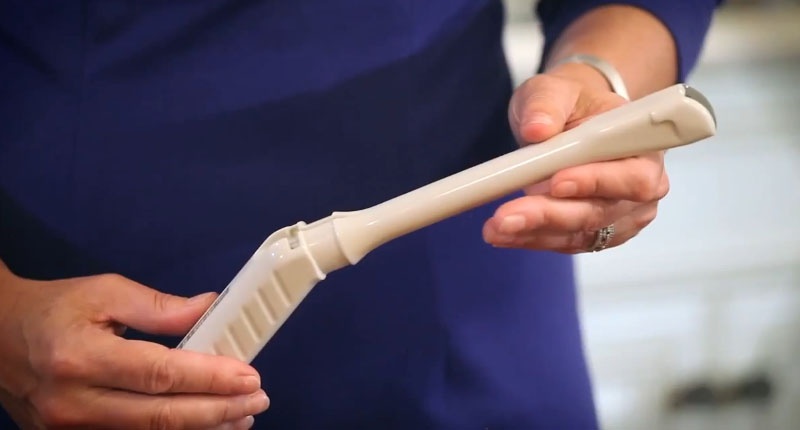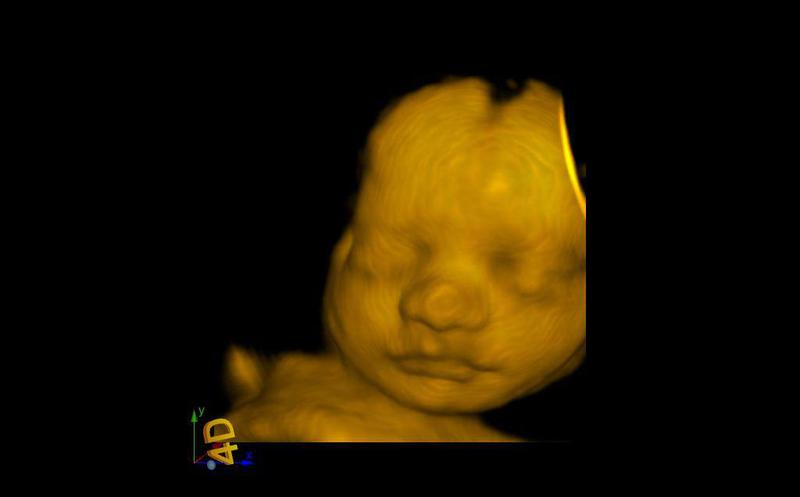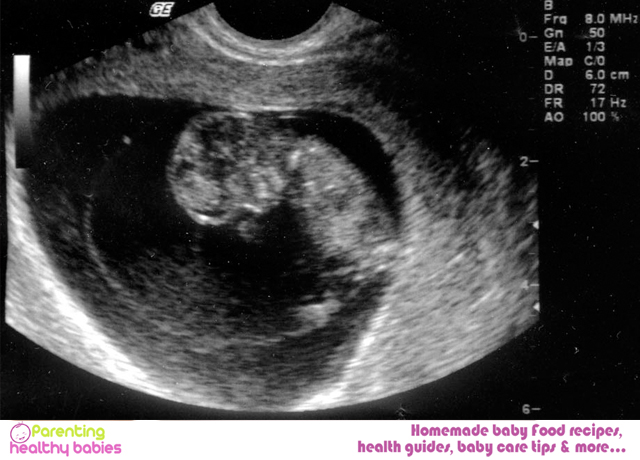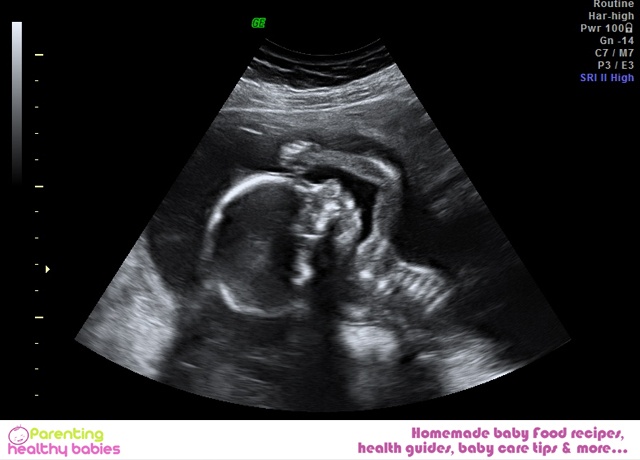The week 2 of pregnancy is marked with minimal physical changes in the women’s body. The confirmation of pregnancy occurs only after 2 to 3 days after the woman has missed her periods. Hence, they do not experience any emotional symptoms.
However, the process of fertilization and fetal development begins in the week 2 of pregnancy itself. Here is a brief discussion about the fetal developments in the week 2 of pregnancy. We will also have a look at the signs and symptoms that may occur during this period.
Read More: 15 Miscarriage Foods To Avoid During Early Pregnancy
Fetal development in week 2 of pregnancy
At the second week, the pregnancy is yet to occur. Conception occurs when the egg released by the ovaries fertilize with the sperm to form a zygote.
To facilitate this process, the body produces an increased amount of female hormones, estrogen and progesterone, during the first week of the menstrual periods. The higher level of hormones prompts the uterus to secrete a thick lining of tissues. This tissue has a rich vasculature to support the attachment of the potential fertilized egg. While the uterus is getting prepared for the conception, the eggs in the ovaries ripen. This process occurs in small fluid-filled sacs known as follicles.
During week 2 of pregnancy, the follicles rupture to release the eggs. These eggs travel to the fallopian tubes. This process is called ovulation. In women having 28-days menstrual cycles, ovulation usually occurs between the 12th to 16th day of the menses. This period is called the ovulatory period.
With the progress of pregnancy week by week, the egg fertilizes during ovulatory period. This can occur provided at least one sperm in the ejaculation reaches the fallopian tube through the uterus. About more than 400 sperms can manage to reach the egg. But, only one of them can actually succeed in penetrating its outer membrane to cause successful fertilization.
What happens to the sperms after fertilization?
About 10 to 30 hours after feralization, the nucleus of the sperm merges with the nucleus of the egg. This results in the combining of the genetic materials from the father and the mother, respectively. It is the chromosomes of the father that decide the gender of the baby. If the sperm contains a Y chromosome, the baby will be a boy. If it carries an X chromosome, it will be a girl.
Read More: 18 Early Signs of Pregnancy
Journey back to the uterus
The fertilized sperm and egg is now called the zygote. It travels from the fallopian tube to the uterus during the next 3 to 4 days. The zygote divides to form 16 identical cells during this period. The zygote enters the uterus. It begins to burrow into the thick lining of the uterus to attach itself to the uterine cavity.
The zygote or the developing fetus resembles a small ball comprising of cells that are called blastocyst. These cells have an inner cell mass, which later becomes an embryo. The fluid-filled sac that turns into an amniotic sac. It acts as a shock absorber for the developing baby. The outer mass turns into the placenta. It is a pancake-shaped organ that delivers oxygen and other nutrients to the fetus. It also carries away the waste products.
Read More: 5 Herbs For Strengthening The Uterus
What can you expect during week 2 of pregnancy?
Women trying to conceive can boost their chances of pregnancy by planning their sex to match the ovulation. They should aim to have intercourse during a period two days prior and later the ovulation is expected to occur.
Here are some ways to predict the ovulation period. This can help women to increase their chances of conception:
The Standard Days Method or SDM to know The Fertile Window
A fertile window refers to those days in the menstrual cycle when pregnancy is possible. The fertile days vary from woman-to-woman. It depends on the regularity and the length of her menstrual cycles. SDM is one of the effective methods of calculating the fertile days if the menstrual cycles. Women having 28-days menstrual cycles tend to ovulate between the 13th to the 15th day of the cycle considering the 1st day of the menses as the 1st day of the cycle.
Changes in Cervical Mucus
Cervical mucus is an important indication of ovulation. The cervical mucus is sticky and dry before ovulation. As ovulation comes closer, it becomes creamier in consistency. It tends to take on the consistency of an egg white. It becomes more slippery right before the ovulation. Charting the consistency of the cervical mucus can help women spot the patterns from one menstrual cycle to the next and know the exact fertile window.
Read More: 7 Quick Ways to Increase the Fertility of Your Cervical Mucus
Basal Body Temperature (BBT)
Keeping a record of the BBT using a special BBT thermometer can help women detect the patterns of ovulation. A BBT thermometer can detect the temperature to the tenth degree. To predict ovulation, they can take the temperature the first thing in the morning every day. A rise in the temperature by 0.4 degrees Fahrenheit occurs on the days of the ovulation.
Physical Signs of Ovulation
Most women develop some signs that vary in intensity from barely noticeable to extremely disturbing. Some of the common physical signs of ovulation are mood swings, and light spotting. They may also develop breast tenderness, abdominal cramping, and bloating. Women can maintain a diary and make a record of such symptoms. Over 4 to 5 months, they are able to figure out the symptoms coming up during the mid-cycle period. This is the ovulation period. They can increase the frequency of sex when they get such symptoms in the next cycle.
Read More: 21 Early Signs or Indicators of Pregnancy
Some more tips to keep in mind during week 2 of pregnancy
If you are ready for parenthood, have prenatal visit. You can discuss with your gynecologist your expectations and apprehensions
You may start taking folic acid supplements as it can help to prevent birth defects in children
And you can also do an ovulation test using an ovulation predictor kit. It requires you to dip the test paper into a sample of collected urine. This test can be done once daily, for 6 to 7 days, before the expected ovulatory period. The strip has 2 lines: a test line and a control line. The test is positive if the test line becomes darker than the control line.
The ultrasound tests in the second week will not show any signs of pregnancy as the conception in yet to occur. It may help you to know when exactly the follicles rupture so that you can plan sex accordingly.
Read More: 11 Home Remedies for Treating Heart Burn During Early Pregnancy
Timing the sex during the week 2 of pregnancy based on these signs can improve the chances of conception.

